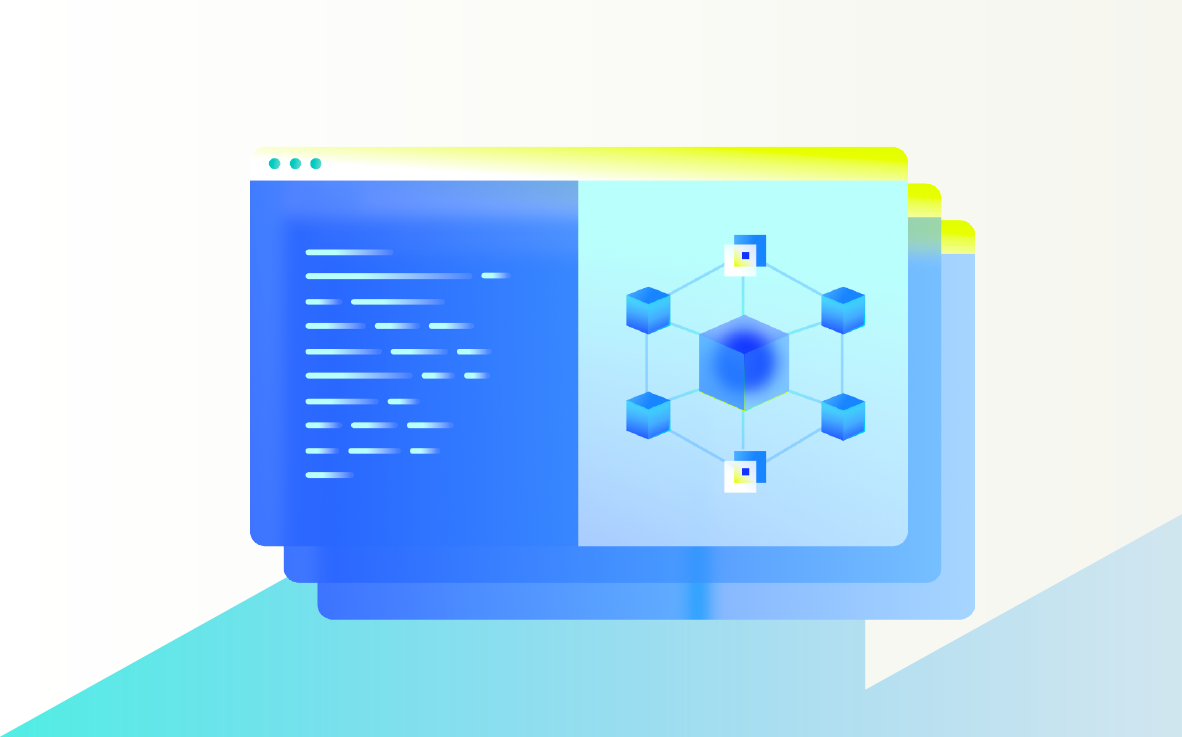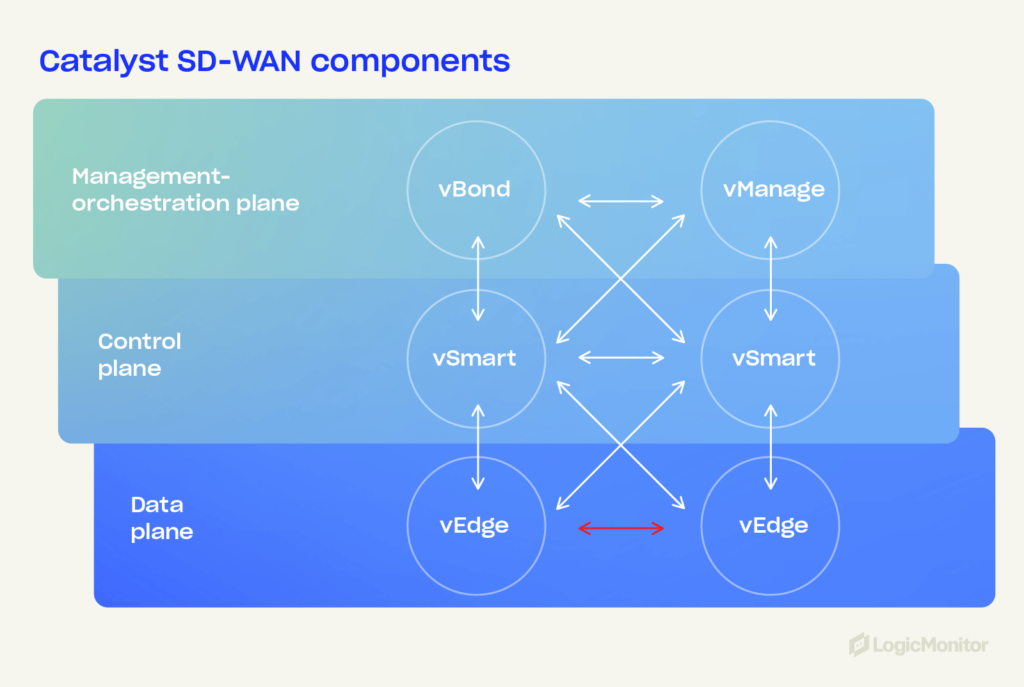Viptela’s evolution: How Catalyst SD-WAN outperforms WAN tech


Using multiple cloud environments in overly complex networks with outdated architectures puts tremendous strain on infrastructures. One of the best solutions for combating overworked architectures is Catalyst SD-WAN, Cisco’s new and improved version of Viptela SD-WAN.
Unveiled in 2023, Catalyst SD-WAN (an updated and rebranded version of Viptela SD-WAN technology) is one of the first Software-Defined Wide Area Network solutions. It provides increased infrastructure speeds and several other key features, like centralized management and security integration. The many benefits of SD-WAN technology are discussed in detail below.
Founded in 2012, Cisco Viptela was one of the first vendors to provide SD-WAN solutions. The Viptela SD-WAN platform gained such popularity that Cisco acquired the brand along with Viptela SD-WAN in 2017 and integrated the Viptela technology into its product portfolio.
In 2023, Cisco introduced Cisco Catalyst SD-WAN, an updated version of Viptela SD-WAN that not only rebrands the Viptela technology package but also offers advanced capabilities, like improved network performance, better security, and increased cost efficiency. Available as a PDF download, the Cisco SD-WAN Design Guide provides a deeper look into the evolution of Cisco’s SD-WAN platform.
As network infrastructures become more complex and challenging to manage, traditional Wide Area Network (WAN) architectures struggle with scalability, flexibility, and cost-efficiency. Having an efficient, secure, and scalable network solution is no longer a luxury but a necessity, and Catalyst SD-WAN is one of the most effective solutions available. Using software-defined networking principles, Catalyst SD-WAN helps manage and control network traffic in a more agile and cost-effective manner.
Catalyst SD-WAN is more than an upgrade—it’s a transformative leap in network performance, security, and scalability.
Cisco Catalyst SD-WAN is built on a flexible architecture that includes several key components—vEdge routers, vSmart controllers, vManage, and vBond orchestrators. These components create a secure, scalable, and efficient network environment.

Separating the data plane (data forwarding) from the control plane (network control) optimizes traffic flow and allows the application of security policies across networks.
An encrypted overlay network over existing transport mediums, such as MPLS, broadband, and LTE, ensures consistent and secure connectivity across all locations and provides a more reliable network foundation for business operations.
Centralized policies that govern traffic flow, security rules, and application performance can be easily defined and updated based on business needs.
Cisco Catalyst SD-WAN provides a powerful suite of features that streamline network management, bolster security, and optimize performance. From centralized control to comprehensive analytics, these eight key features are designed to address the complexities of modern network environments.
Catalyst SD-WAN is an attractive solution for network management due to its potential for enhanced application performance. Reducing a network’s complexity reduces the risk of latency and connectivity issues and improves consumers’ user experience.
Traditional WANs, rooted in hardware-centric models, struggle with scalability, flexibility, and the ability to adapt to modern network demands. Cisco Catalyst SD-WAN introduces a software-defined approach that addresses these challenges head-on. Upgrading network infrastructures requires understanding the distinct differences between SD-WAN and traditional WAN architecture.
Traditional WAN operations rely heavily on hardware, which isn’t always flexible and difficult to scale. In contrast, Cisco Catalyst SD-WAN uses a software-defined approach that separates network control from hardware, offering greater flexibility and scalability.
Cisco Catalyst SD-WAN offers superior performance compared to traditional WANs, with enhanced redundancy and failover capabilities. The solution’s dynamic routing and real-time traffic management features—compared to fixed pathways for data transmission—ensure that critical applications remain accessible even in the event of network disruptions.
While traditional WANs often rely on perimeter-based security models that offer limited visibility into network traffic, Cisco Catalyst SD-WAN integrates security into every layer of the network. This approach addresses modern security threats more effectively, providing a comprehensive defense against potential vulnerabilities with features like encryption, advanced threat detection, malware sandboxing, and centralized security policy management.
Catalyst SD-WAN offers a lower total cost of ownership (TCO) compared to traditional WANs by reducing hardware dependencies and leveraging cost-effective transport options. Because of centralized management, an SD-WAN can also lead to faster deployment (and lower operational costs), allowing businesses to achieve a higher return on investment (ROI).
Traditional WANs can struggle to adapt to changing network scales and configurations because they often require on-site physical configuration changes and struggle to integrate with new technology. Catalyst SD-WAN, however, is designed for scalability, allowing businesses to integrate new technologies—both on-prem and cloud services—as needs evolve.
Traditional WANs struggle with flexibility and scalability, but Cisco Catalyst SD-WAN redefines these capabilities with a software-defined approach.
Understanding the practical applications of Cisco Catalyst SD-WAN can help illustrate its benefits for various industries. Here are some real-life scenarios that showcase how organizations leverage SD-WAN to enhance their network performance, security, and scalability.
1. Retail chain with distributed branch locations
Challenge: A large retail chain with hundreds of branch locations across different regions faces the challenge of managing network connectivity and security consistently across all stores. This means employees may not be able to do their jobs or serve customers. The traditional WAN infrastructure is complex and costly to maintain, and it is limited in its ability to prioritize critical applications like point-of-sale systems and inventory management.
Solution: By implementing Cisco Catalyst SD-WAN, the retail chain can centralize network management across all branches to gain complete visibility into the IT infrastructure and make changes on both high and low levels. The solution provides secure connectivity, application-aware routing, and network segmentation, ensuring that critical applications receive priority while maintaining robust security standards. With Zero-Touch Provisioning (ZTP), new branch locations can be brought online quickly, reducing setup time and operational costs.
Challenge: A global financial services company needs to ensure secure, high-performance connectivity for its offices and remote workers worldwide. Lost connectivity means customers may not be able to access their funds, leading to panic and lost revenue for the firm. The traditional WAN setup struggles with latency and security concerns, particularly as the firm expands into new markets and increases its reliance on cloud services.
Solution: Cisco Catalyst SD-WAN offers a scalable solution that enhances the firm’s global connectivity through optimized routing and integrated security features, ensuring fast online services for customers (something especially important for trading services like high-frequency trading). The firm can securely connect its offices and remote workers, leveraging multiple transport methods (like MPLS, broadband, and LTE) while ensuring compliance with stringent financial industry regulations—protecting customer data and avoiding hefty legal fees. The centralized management provided by vManage allows the IT team to monitor and manage the network in real time, responding quickly to any issues or threats.
Challenge: A healthcare organization with multiple hospitals, clinics, and remote care facilities needs reliable, secure connectivity to support critical applications like electronic health records (EHR), telemedicine, and real-time patient monitoring. Traditional WAN solutions struggle to deliver the necessary performance and security, particularly as the organization expands its services.
Solution: With Cisco Catalyst SD-WAN, the healthcare service provider can create a secure, high-performance network that supports critical applications across all facilities. The solution’s integrated security features, including end-to-end encryption and advanced threat protection, ensure that patient data is protected, while application-aware routing optimizes the performance of essential healthcare applications. The SD-WAN’s scalability also allows the organization to quickly integrate new facilities, services, and technology (like IoT devices) into the network as it grows.
Challenge: A manufacturing company with a global supply chain needs efficient and secure communication between its production facilities, suppliers, and distribution centers. Traditional WAN solutions can’t keep up with the dynamic nature of modern manufacturing, where real-time data and agile responses are critical for maintaining inventory and delivery schedules.
Solution: Cisco Catalyst SD-WAN enables the manufacturing company to establish a secure and agile network that connects all elements of its global supply chain. Using application-aware routing and network segmentation, the company can prioritize and protect critical communications and data transfers, giving each location the information it needs to make decisions and serve customers. This setup improves operational efficiency, reduces downtime, and supports the company’s digital transformation initiatives, such as the adoption of IoT and smart manufacturing technologies.
Challenge: A university with multiple campuses and remote learning centers must provide reliable, high-performance connectivity to support online learning platforms, campus security systems, and administrative applications. The traditional WAN infrastructure is not flexible enough to adapt to the growing demand for bandwidth from student activity, new educational resources, and security.
Solution: Cisco Catalyst SD-WAN provides the university with a flexible, scalable network solution that ensures consistent connectivity across all campuses and remote learning centers. The centralized management platform allows the IT team to deploy security policies uniformly, optimize bandwidth allocation for critical applications, and monitor network performance in real time. The SD-WAN’s ability to integrate with cloud-based learning platforms also supports the university’s digital education initiatives.
By addressing the limitations of traditional WAN architecture, Catalyst SD-WAN enhances application performance, reduces costs, and simplifies network management. Its flexible and secure architecture enables organizations across various industries to remain agile, protect their data, and efficiently manage their infrastructures, whether for cloud migration, distributed systems, or global operations.
LogicMonitor’s tools help businesses improve network visibility while obtaining the maximum amount of benefits from Catalyst SD-WAN.
Catalyst SD-WAN is an enhanced, rebranded version of Viptela SD-WAN. It offers better security, scalability, and performance while adding features like zero-trust security, advanced analytics, and modern SD-WAN architecture.
It provides end-to-end encryption, zero-trust security, intrusion prevention, and integrated threat protection. These features secure data in transit and simplify compliance across distributed networks.
Centralized management helps consistent policy enforcement and real-time network changes from one dashboard. This simplifies operations and supports dynamic application-aware routing.
Catalyst SD-WAN securely connects to cloud platforms like AWS and Azure. It integrates with cloud-delivered security services by supporting hybrid environments with flexible SD-WAN architecture.
Industries like retail, finance, healthcare, manufacturing, and education use Catalyst SD-WAN to improve security, agility, and application-aware routing across distributed sites.
It reduces costs by using broadband and LTE instead of MPLS, cutting hardware needs, and automating network management to lower operational expenses.
It supports rapid site deployment, flexible routing, and easy integration with cloud and security tools. This helps businesses expand without major network changes.
© LogicMonitor 2025 | All rights reserved. | All trademarks, trade names, service marks, and logos referenced herein belong to their respective companies.
